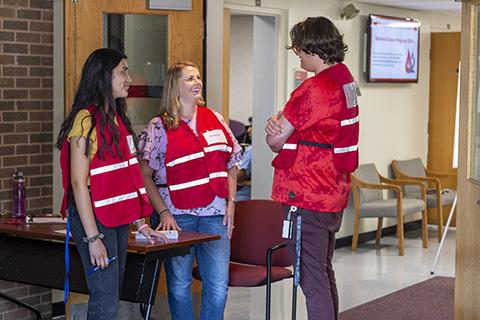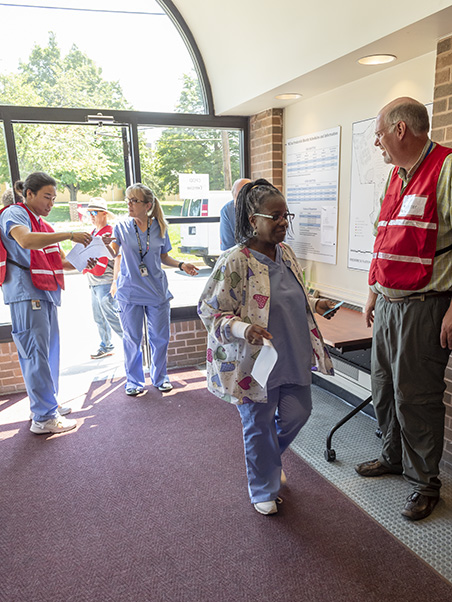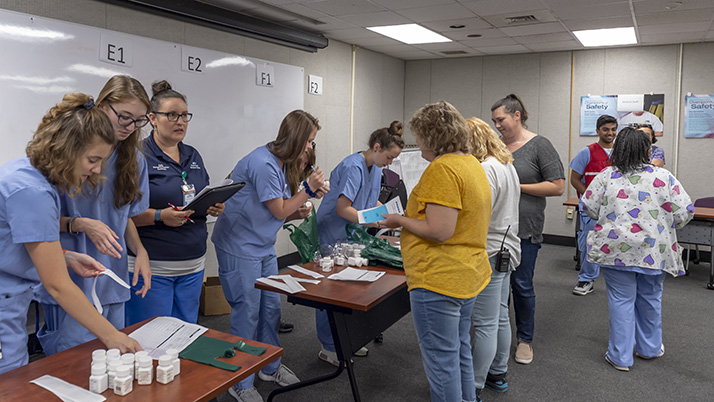Distributing lifesaving antibiotics to 9,000 people within 24 hours of a bioterrorism attack is among the responsibilities of the Environment, Health and Safety Directorate of the Frederick National Laboratory for Cancer Research. With that life-or-death mission in mind, EHS ran a drill on July 19 at the NCI at Frederick in response to a simulated attack.
EHS set up a simulated Closed Point of Dispensing, processing more than 100 volunteers through a series of checkpoints and lines where they each picked up a bag of what, in a real incident, would contain antibiotics. The volunteers returned the empty bottles on their way out. The exercise confirmed EHS could get medicine to a lot of people in a short span of time.
“Our goal is efficiency,” said emergency manager Ron Kunz. “It’s go, go, go!”
Kunz had help from EHS interns Clarissa Bazan and Michael Sarnecky, who proudly sported their red “site supervisor” vests. The two trained 40 volunteers the day before and assigned each a specific job.
“I didn’t even know what a CPOD was until two weeks ago, and now I’m running one,” Bazan said.
The drill confirmed Sarnecky’s expectations coming into the EHS internship: “I will never be bored,” he said.
The bacterium that causes anthrax is one of the biological agents most likely to be used in a bioterrorism attack. If the bacterial spores were released into the air, people who inhaled them could become sick. Anthrax can kill if not treated with antibiotics within two days of exposure.
With 255,000 residents in Frederick County, the Heath Department would have its hands full getting antibiotics into the hands of each one of them in 24 hours. Schools and other locations throughout the county would quickly be converted to distribution centers, each needing to accommodate at least 25,000 people.
Large organizations such as NCI at Frederick and the Frederick National Laboratory ease some of that pressure by setting up a CPOD for employees, their families and visitors. Kunz estimates about 9,000 people could receive medication from the CPOD and avoid the likely very crowded public sites. In the event of a bioterrorism event, EHS would set up distribution centers in Building 549 on the NCI at Frederick campus and at the ATRF and vaccine manufacturing plant.




